-
ABOUT US
-
ACADEMICS
Curriculum Program
Departments
- English
- High School Chinese
- Primary and Junior School Chinese.
- High School Mathematics
- Middle School Mathematics
- Primary School Mathematics
- Music and Fine Arts
- Physical Education
- Physics
- Chemistry
- History and Geography
- Physical Science and Optional courses Department
- Middle School Biology
- High School Biology
- Social Sciences
- Computer Science
- Courses in Primary School
Achievements and Matriculations
College Counseling
Science & Technology Innovation Contest
-
ARTS
-
ATHLETICS
-
AT SHSID
SHSID ∣ TIMES
PTSA
Club Exhibition
- 龙吟社
- Live 2 Drama
- Choir
- Hip-pop Dance Club
- The Primary School Dance Troupe
- Symposiums Club
- Biology Workshop
- You Shan
- VEX Robotic
- Peking Opera Club
- Baseball Club
- Model United Nations
- The World Scholar’s Cup
- Future Problem Solving Club
- United States Academic Pentathlon
- OM Club
- AMC Club
- Music for Patients
- SHSID Gazette
- Smile Charity
- Cultural Moments
- SciAcademy
- Stem Doge Alliance
- Chinese Debate Club
- IAA
- Mock Trial Club
- Zhengming Club
- Art-to-zine
- Bananaheads
- Electronics
- Furry Friends
- GT-Racing
- MCG Philharmonics
- Village Radio
- IMMC Club
- Creative Design and Intelligent Fabrication
- Future City Research Project
- ECOCAP
- AdvocaSEA
- SPDC
- Medishine
- Floorball Club
- Animusic MTC
- Wings Up
Health and Wellness
Campus Safety
Cafeteria Service
-
ADMINISTRATION
-
ADMISSIONS
-
ALUMNI
Alumni Information
Honors Students
- Class of 2024
- Class of 2023
- Class of 2022
- Class of 2021
- Class of 2020
- Class of 2019
- Class of 2018
- Class of 2017
- Class of 2016
- Class of 2015
- Class of 2014
- Class of 2013
- Class of 2012
- Class of 2011
- Class of 2010
- Class of 2009
- Class of 2008
- Class of 2007
- Class of 2006
Who Studied at SHSID
SHS Foundation
-
DOCUMENTS
High School Physics Department: Dialogues with Nature, Deciphering the Universe
On the afternoon of March 18, the High School Physics Department held a book-sharing session titled "More physics, more than physics" in the Zhongxing Building Theater. This event was hosted by the Head of the physics department, Mr. Xu Zhencheng. At the event site, teachers Li Lejun, Yu Haifeng, and Wang Yan and the special guest, Professor Song Mingzhi from Shanghai Jiao Tong University, gathered together. They shared their favorite books and expressed their reading insights, creating a thought-provoking feast that transcended disciplinary boundaries for the teachers and students present.
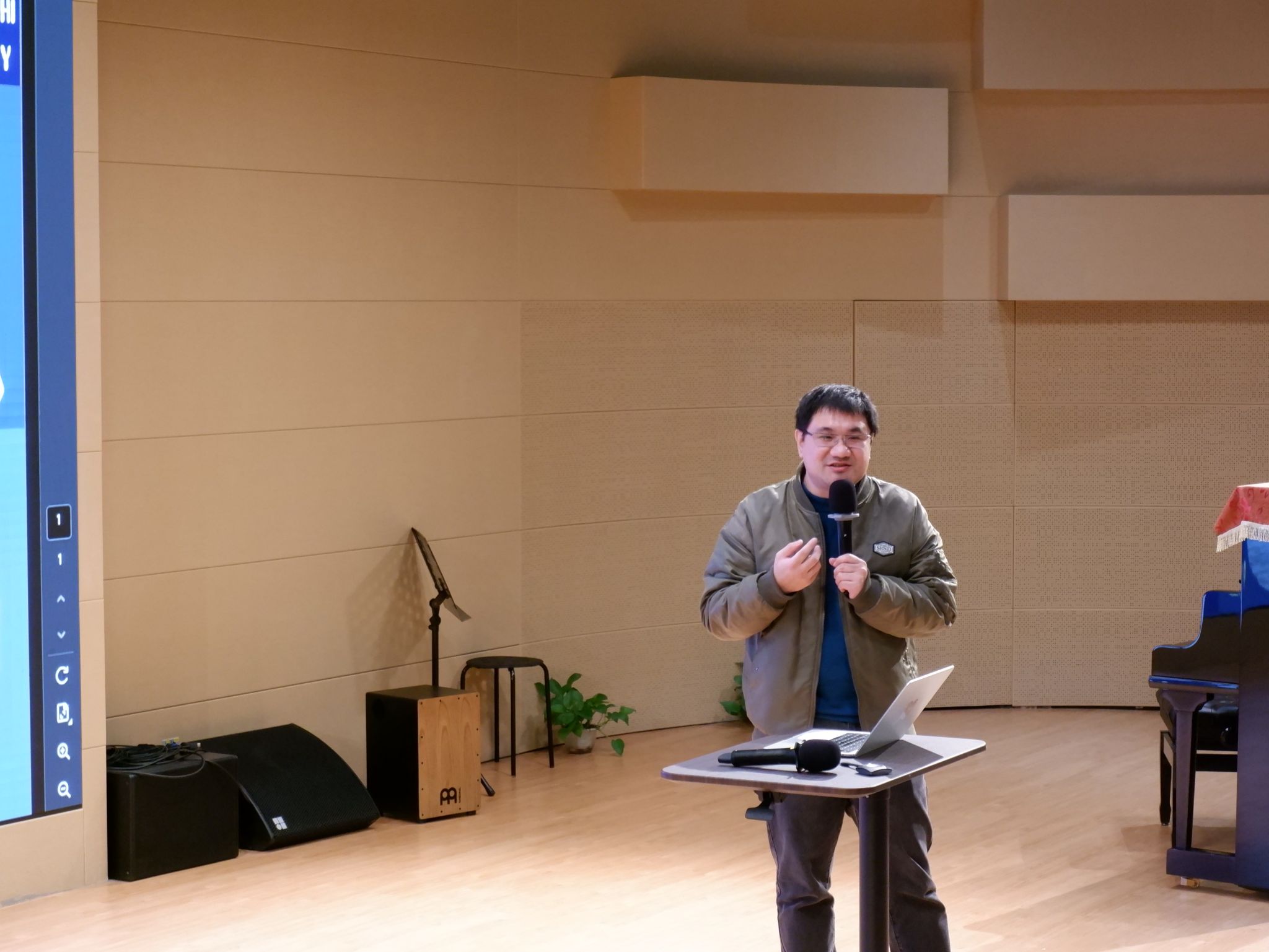

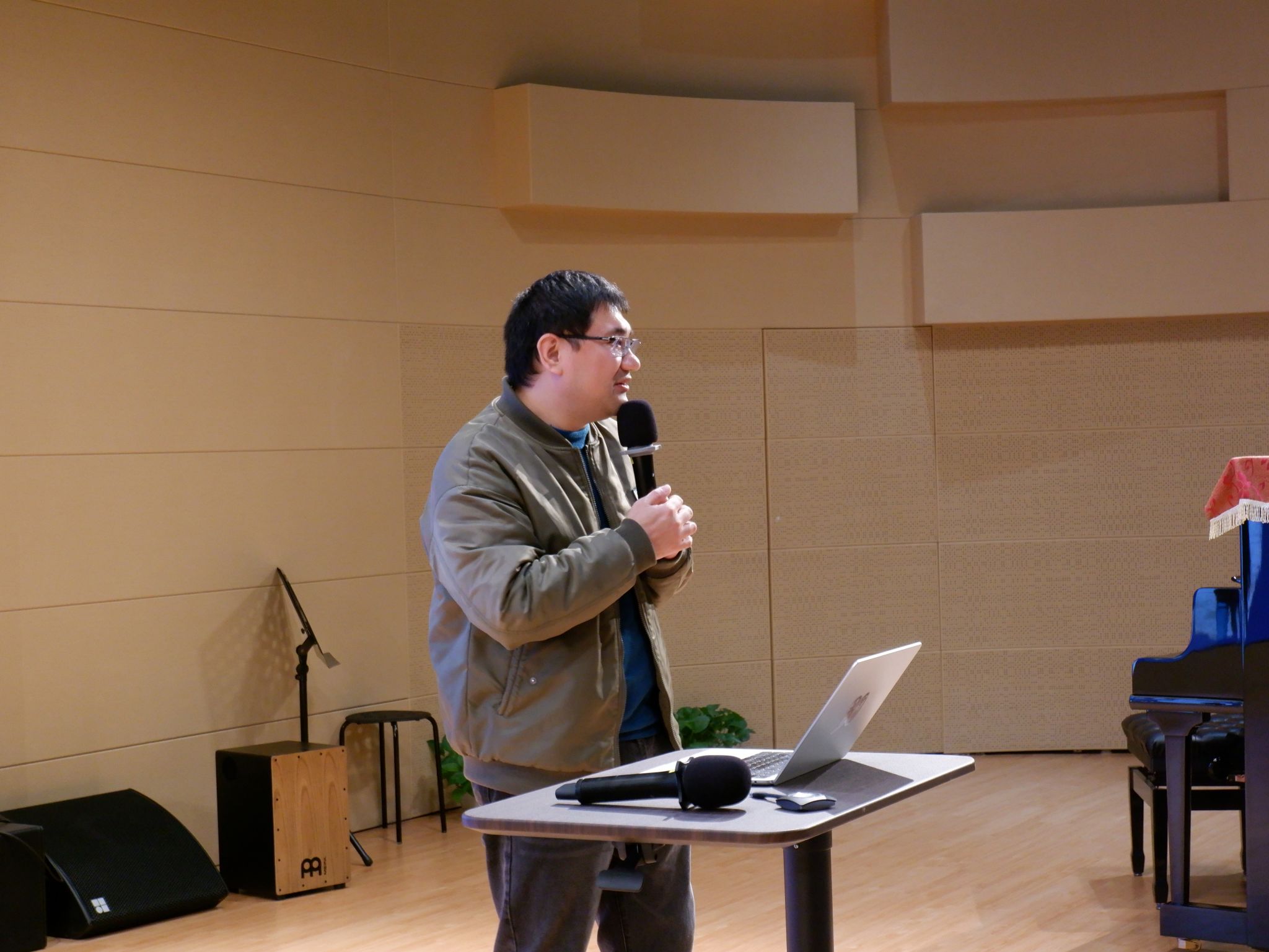
Hardcore Romanticism in Science Fiction
Ms. Li Lejun began the event by taking the science fiction novel "The Martian" as the starting point and transforming herself into the "Mars Survival Science Class" instructor on the spot. Starting from the exciting plot of the protagonist modifying the living cabin and calculating orbital parameters, she deeply analyzed the scientific logic in the film and ingeniously integrated knowledge such as material mechanics, orbital dynamics, and Newton's three laws. When discussing the protagonist using a film-like membrane to isolate the Mars storm, Ms. Li humorously pointed out: "The Martian atmosphere density is only 1% of that of Earth, and the so-called hurricane power is almost like a gentle breeze." This sharing inspired the 9th and 10th-grade students studying mechanics, who were astonished to discover that the seemingly dull physics formulas on the test paper could become the romantic code for exploring the universe, opening up a new perspective for them to explore science.
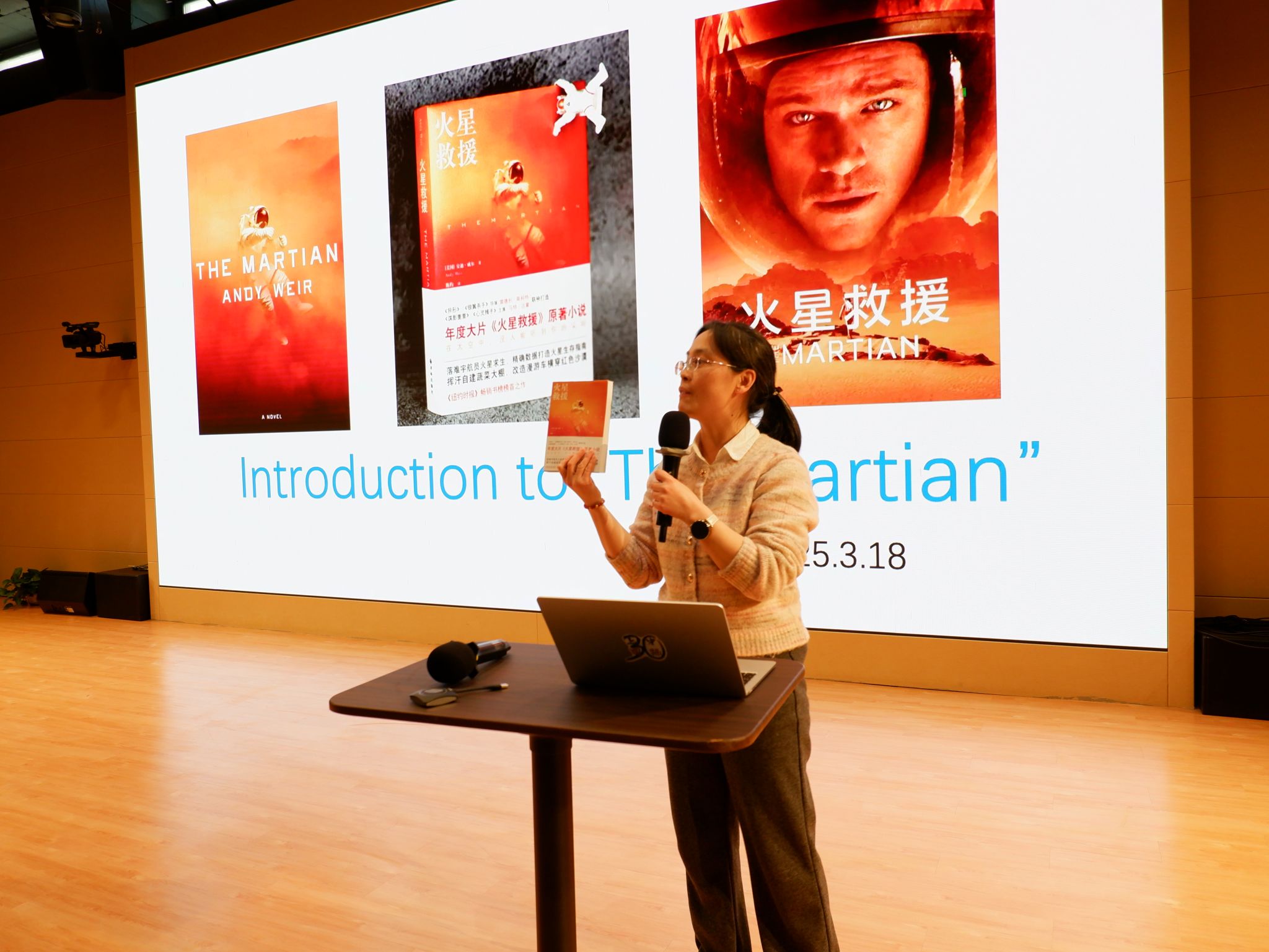
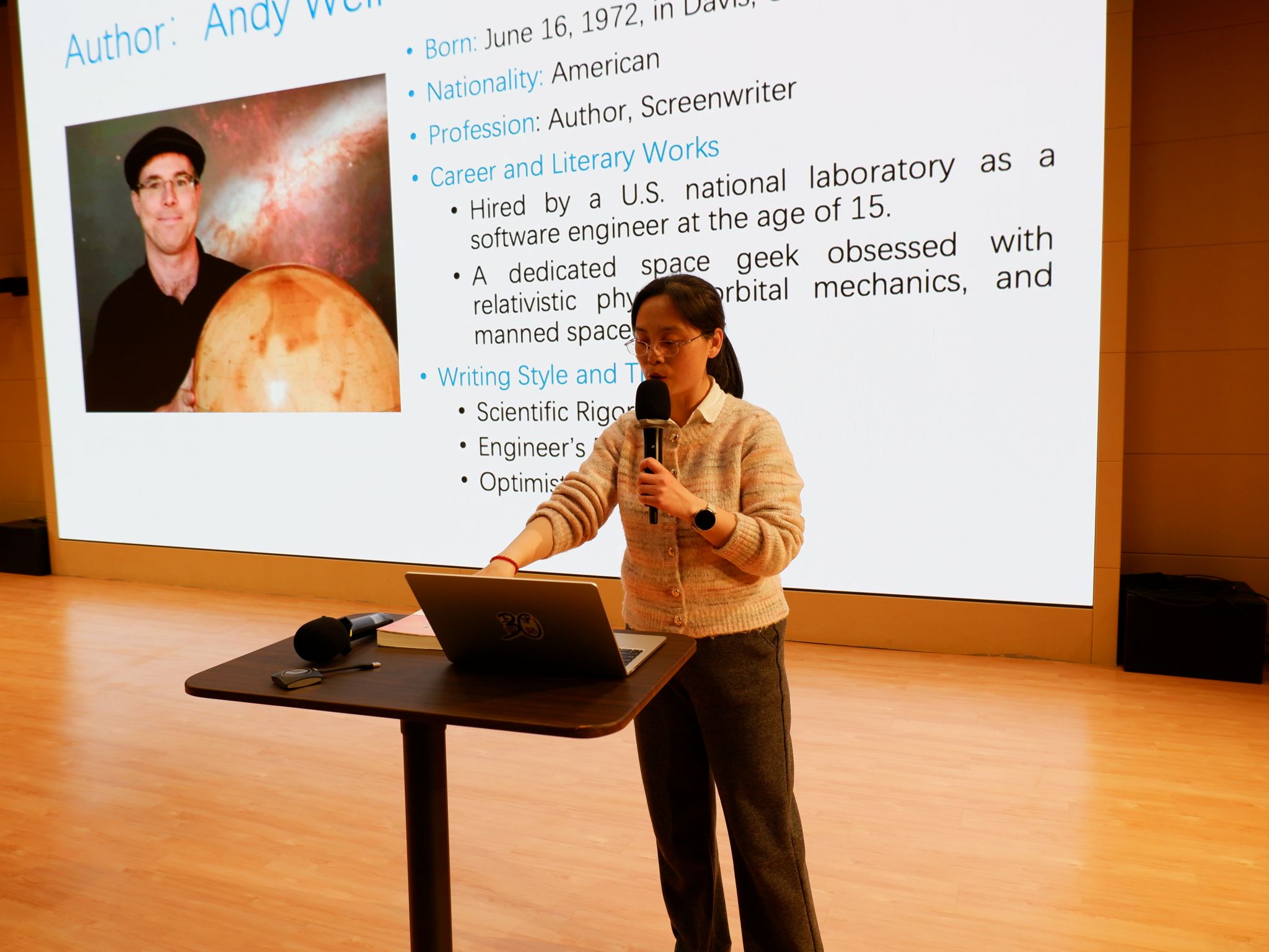
Exploring the Heavens with Physics
Mr. Yu Haifeng, with the title "Deep Integration of Physics and Manned Spaceflight," deeply interpreted the scientific support behind the "Shenzhou" and "Tiangong" series. Through actual cases such as microgravity experiments and space radiation protection, he vividly demonstrated the key role of fluid mechanics and heat conduction principles in ensuring astronauts' survival. Mr. Yu also systematically explored the mystery of interdisciplinary collaborative innovation: Electromagnetism builds the deep-space information network, wireless power supply technology helps the lunar rover operate in real-time, anti-interference systems ensure the stability of communication links spanning billions of kilometers; Atomic physics promotes technological innovation at the microscopic level, and the Beidou Navigation relies on atomic clocks with trillionth-second precision to achieve centimeter-level positioning, and nanoalloys reduce the weight of SpaceX starships by 30% and breakthrough material limits. Looking forward to the future, the iterative development of quantum technology and the breakthrough of nuclear fusion engines may reshape the boundaries of human exploration of deep space.
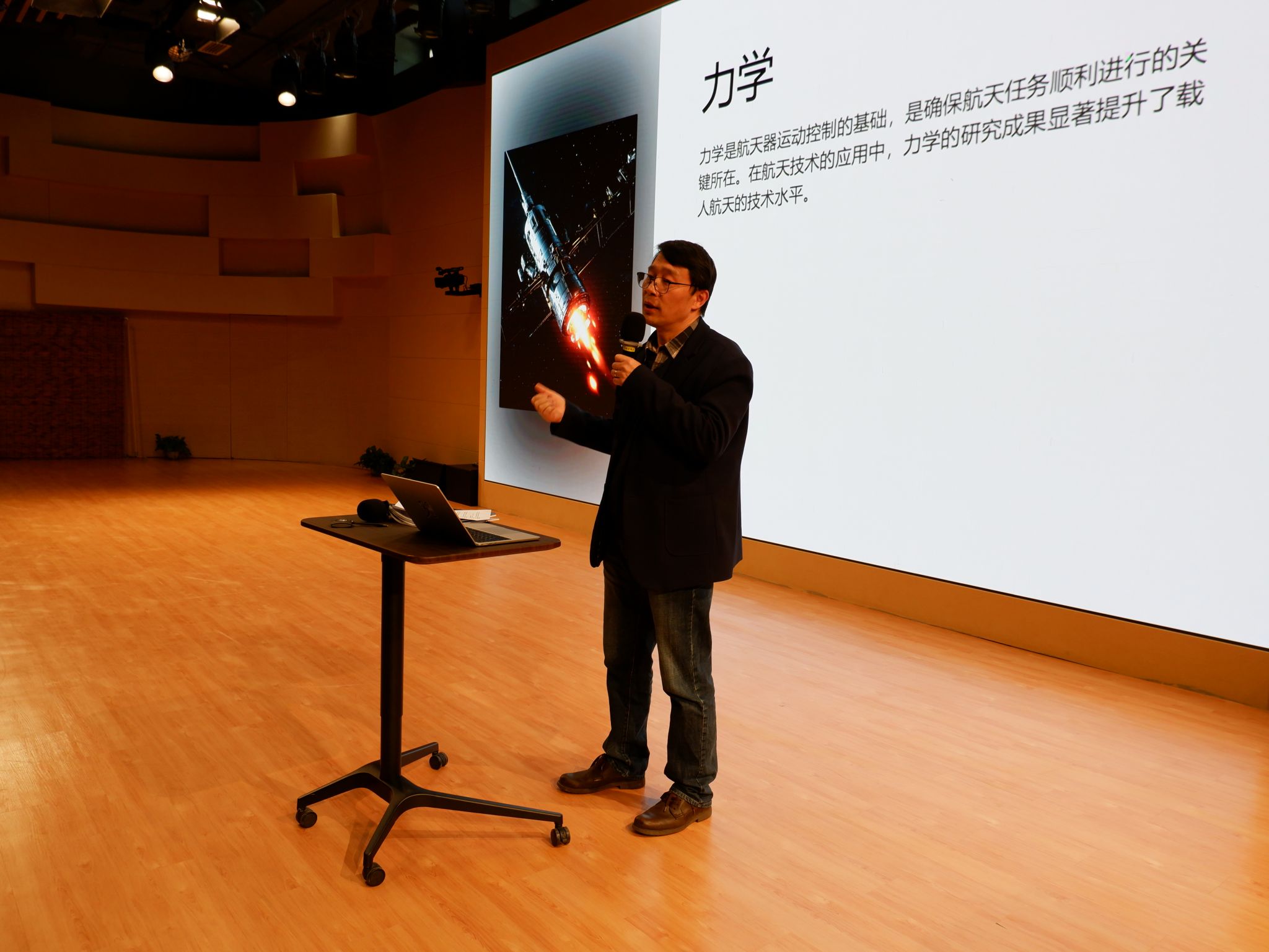
Physical Mirror of Classical Chinese Medicine
Ms. Wang Yan brought the reading sharing "Introduction to Classical Chinese Medicine," and it was refreshing. As a science student, Ms. Wang shared her experience of changing her prejudice against Chinese medicine, meeting Chinese medicine by chance, and being pleasantly surprised to discover the wonderful commonalities between Chinese medicine concepts and quantum physics. She ingeniously used "storage" as an analogy to vividly show the gap in dialogue between modern science and classical Chinese medicine; by using "string theory" and the double-slit interference experiment of electrons, she transformed those seemingly "invisible" metaphysical concepts in the Chinese medicine system into knowledge that students could easily understand, revealing the interaction between matter and consciousness. A student expressed excitement after the sharing: "Ms. Wang’s sharing opened a new world for me, allowing me to glimpse a corner of Chinese medicine and traditional Chinese culture, and I felt that there must be secrets of the universe and the truth of life hidden within."
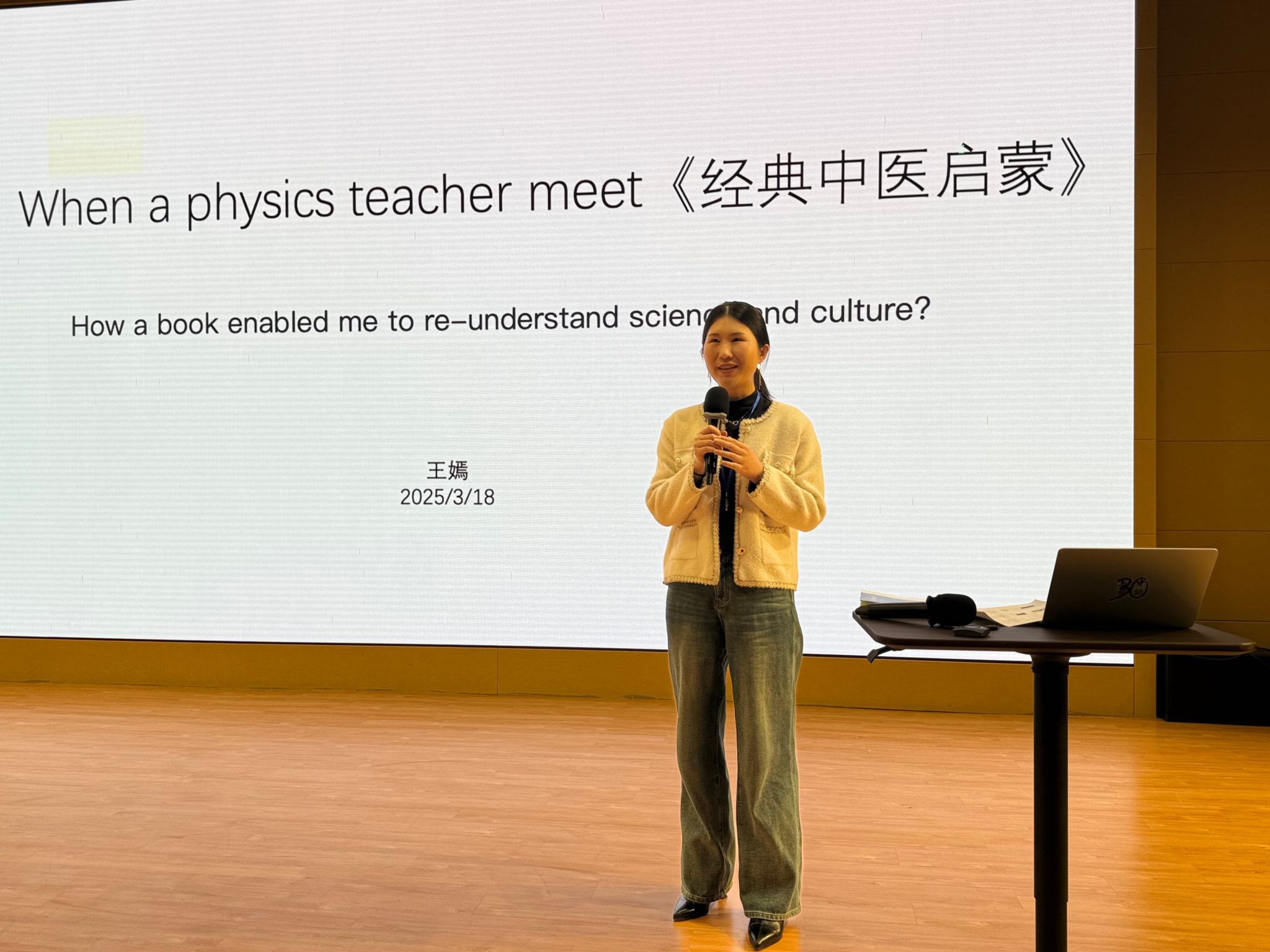
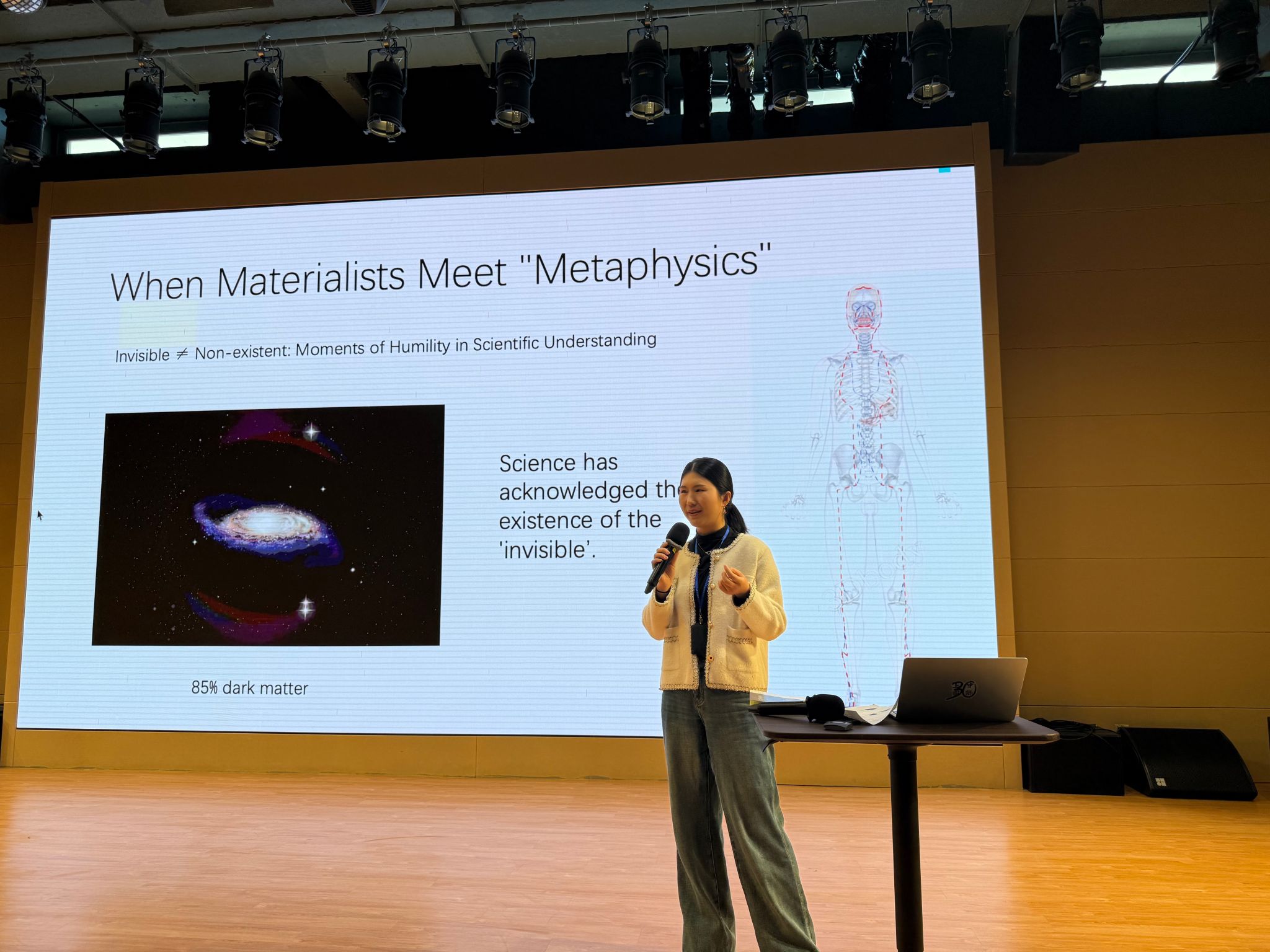
The Physical Philosophy of Nature
In a warm round of applause, as a special guest, Professor Song Mingzhi from Shanghai Jiao Tong University took the stage as the closing speaker, leading the students to explore the magical "biological superpowers." Based on "Introduction to Bionics," Professor Song revealed the physical optimal solutions contained in the evolution of organisms over a long period of time. Professor Song presented numerous cutting-edge cases during the lecture, such as "The superhydrophobic surface of lotus leaves provided inspiration for anti-fouling coating technology, and the unique flexible movement patterns of octopus arms promoted the transformation of robot design." These vivid examples opened the eyes of the students, and they all exclaimed, "It's as if we have unlocked the hidden manual of nature." Everyone deeply realized that physics is not just a collection of dry formulas in textbooks but a key to unlocking the door to the wisdom of life.
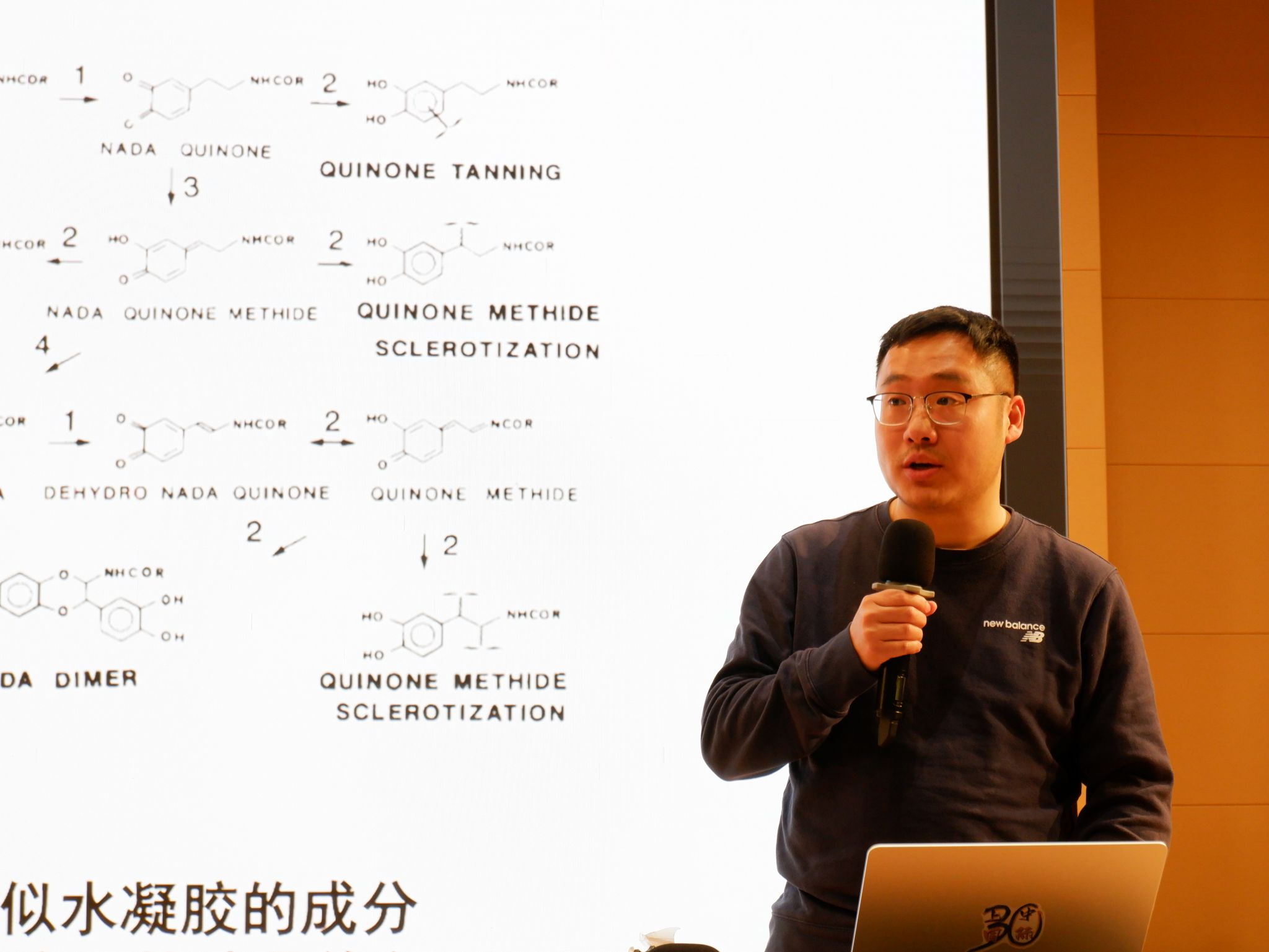
As the host, Mr. Xu Zhencheng, said, "When physics engages in dialogue with everything, every speck of dust may shine with the mysteries of the universe." This book-sharing session broadened the students' knowledge horizons and sparked their strong interest in physics learning, injecting new vitality into the campus culture.
(Written by Yan Wang Pictures by Yan Wang Edited by Cody Turner Reviewed by Qian Zuo)